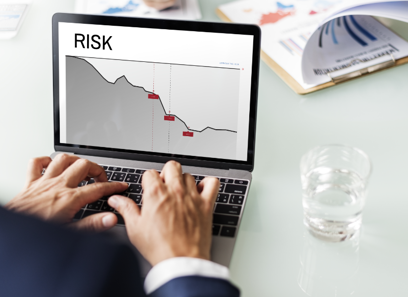Review 7 Cybersecurity Predictions for 2025 to prepare for emerging threats.
Wiki Article
Future-Proof Your Business: Key Cybersecurity Forecasts You Need to Know
As companies challenge the increasing pace of digital makeover, comprehending the developing landscape of cybersecurity is essential for long-lasting resilience. Predictions recommend a considerable uptick in AI-driven cyber risks, along with heightened regulative examination and the crucial shift towards Absolutely no Depend on Architecture.Increase of AI-Driven Cyber Risks

One of the most concerning growths is making use of AI in creating deepfakes and phishing schemes that are extremely persuading. Cybercriminals can make audio and video clip material, posing executives or trusted individuals, to control sufferers into revealing sensitive info or licensing fraudulent transactions. Additionally, AI-driven malware can adapt in real-time to escape detection by typical protection procedures.
Organizations need to acknowledge the immediate demand to reinforce their cybersecurity frameworks to deal with these advancing hazards. This includes investing in sophisticated hazard discovery systems, cultivating a culture of cybersecurity awareness, and carrying out robust event feedback strategies. As the landscape of cyber threats changes, proactive measures end up being necessary for safeguarding delicate information and maintaining business honesty in an increasingly digital globe.
Enhanced Emphasis on Information Privacy
How can companies efficiently navigate the growing emphasis on information personal privacy in today's electronic landscape? As regulatory structures progress and customer expectations rise, businesses need to focus on durable information privacy approaches.Investing in employee training is critical, as staff recognition straight influences information protection. Additionally, leveraging innovation to boost data safety is vital.
Partnership with lawful and IT groups is essential to line up information personal privacy initiatives with company objectives. Organizations needs to also engage with stakeholders, consisting of customers, to interact their commitment to information privacy transparently. By proactively resolving data personal privacy concerns, companies can develop trust and boost their online reputation, ultimately contributing to long-lasting success in an increasingly scrutinized electronic environment.
The Change to No Depend On Design
In feedback to the evolving danger landscape, companies are significantly taking on Zero Trust Style (ZTA) as a basic cybersecurity method. This technique is predicated on the concept of "never ever count on, constantly validate," which mandates continuous verification of customer identities, gadgets, and data, regardless of their location within or outside the network perimeter.Transitioning to ZTA involves executing identity and accessibility administration (IAM) solutions, micro-segmentation, and least-privilege accessibility controls. By granularly regulating access to resources, organizations can mitigate the risk of expert risks and lessen the impact of external violations. Additionally, ZTA incorporates robust tracking and analytics capacities, enabling organizations to identify and react to abnormalities in real-time.

The shift to ZTA is also fueled by the raising fostering of cloud services and remote work, which have actually broadened the assault surface area (cybersecurity and privacy advisory). Conventional perimeter-based safety and security versions want in this brand-new landscape, making ZTA a much more resilient and flexible framework
As cyber risks remain to expand in elegance, the adoption of Zero Trust principles will certainly be critical for companies seeking to protect their properties and preserve regulatory conformity while making certain organization continuity in an unpredictable atmosphere.
Regulative Adjustments on the Perspective

Upcoming regulations are anticipated to address a series of problems, including information personal privacy, breach notice, and occurrence response procedures. The General Data Defense Law (GDPR) in Europe has set a precedent, and comparable frameworks are emerging in other regions, such as the United States with the proposed government privacy legislations. These laws commonly impose stringent charges for non-compliance, emphasizing the demand for companies to prioritize their cybersecurity procedures.
Moreover, markets such as finance, healthcare, and essential framework are likely to deal with much more rigorous demands, showing the sensitive nature of the data they manage. Compliance will certainly not merely be a legal commitment however an essential part of building depend on with clients and stakeholders. Organizations needs to stay in advance of these modifications, integrating regulatory demands right into their cybersecurity approaches to make certain durability and protect their possessions successfully.
Value of Cybersecurity Training
Why is cybersecurity training an important part of a company's defense technique? In an age where cyber hazards are significantly sophisticated, companies have to identify that their workers are frequently the initial line of protection. Reliable cybersecurity training outfits staff with the understanding to determine potential hazards, such as phishing attacks, malware, and social engineering strategies.
By cultivating a culture of safety and security recognition, companies can substantially reduce the risk of human mistake, which is a leading root cause of data violations. Normal training sessions make sure that staff members stay informed about the latest dangers and best methods, therefore improving their ability to react suitably to events.
Additionally, cybersecurity training advertises compliance with governing requirements, minimizing the danger of legal effects and monetary fines. It additionally empowers staff members to take possession of their role in the organization's safety and security structure, resulting in a positive as opposed to reactive approach find out to cybersecurity.
Conclusion
In conclusion, the advancing landscape of cybersecurity demands aggressive actions to resolve emerging dangers. The surge of AI-driven attacks, combined Read Full Report with increased data privacy issues and the change to Absolutely no Trust fund Design, demands a comprehensive approach to safety.Report this wiki page